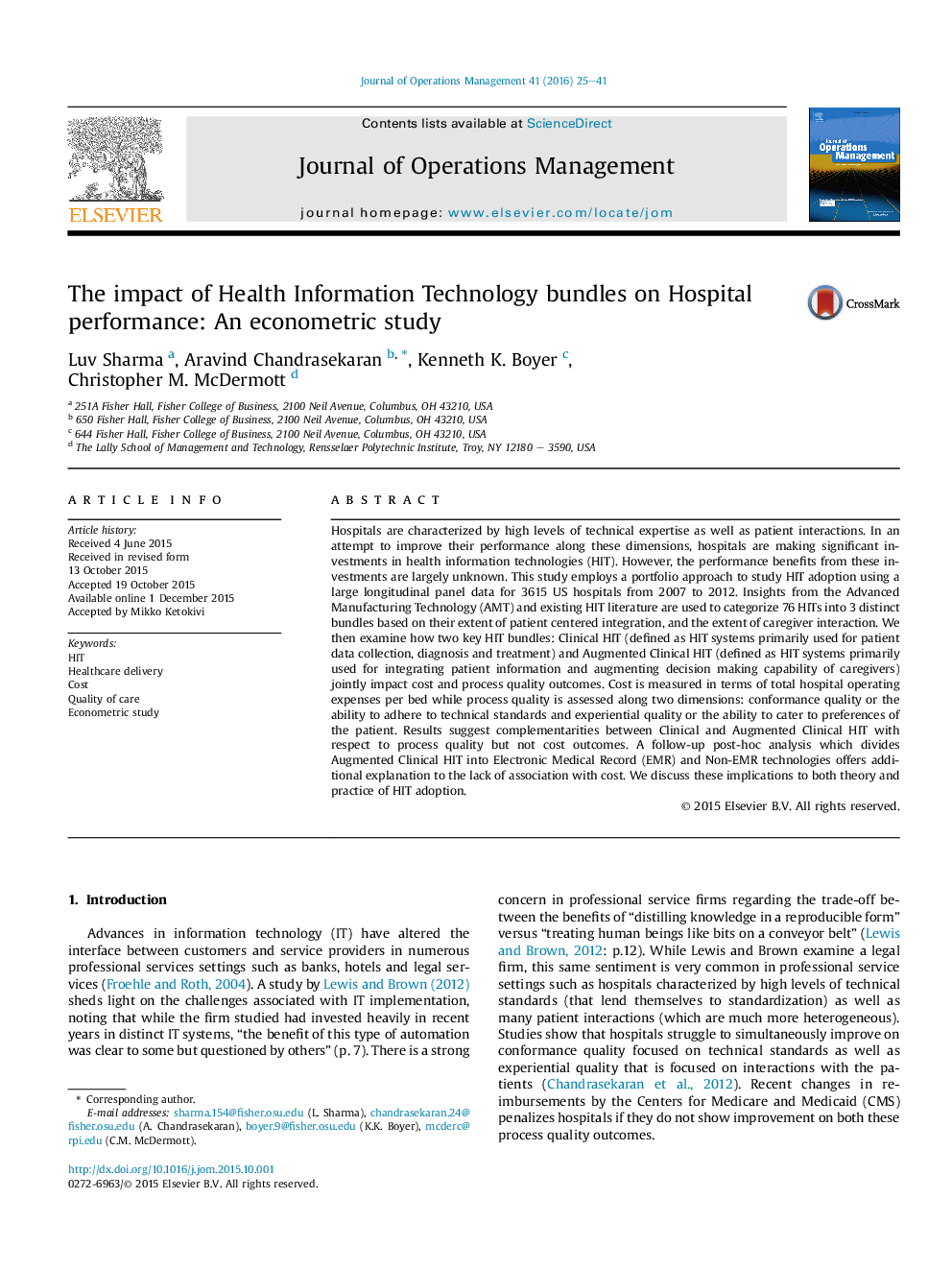| Article ID | Journal | Published Year | Pages | File Type |
|---|---|---|---|---|
| 1031611 | Journal of Operations Management | 2016 | 17 Pages |
Hospitals are characterized by high levels of technical expertise as well as patient interactions. In an attempt to improve their performance along these dimensions, hospitals are making significant investments in health information technologies (HIT). However, the performance benefits from these investments are largely unknown. This study employs a portfolio approach to study HIT adoption using a large longitudinal panel data for 3615 US hospitals from 2007 to 2012. Insights from the Advanced Manufacturing Technology (AMT) and existing HIT literature are used to categorize 76 HITs into 3 distinct bundles based on their extent of patient centered integration, and the extent of caregiver interaction. We then examine how two key HIT bundles: Clinical HIT (defined as HIT systems primarily used for patient data collection, diagnosis and treatment) and Augmented Clinical HIT (defined as HIT systems primarily used for integrating patient information and augmenting decision making capability of caregivers) jointly impact cost and process quality outcomes. Cost is measured in terms of total hospital operating expenses per bed while process quality is assessed along two dimensions: conformance quality or the ability to adhere to technical standards and experiential quality or the ability to cater to preferences of the patient. Results suggest complementarities between Clinical and Augmented Clinical HIT with respect to process quality but not cost outcomes. A follow-up post-hoc analysis which divides Augmented Clinical HIT into Electronic Medical Record (EMR) and Non-EMR technologies offers additional explanation to the lack of association with cost. We discuss these implications to both theory and practice of HIT adoption.
